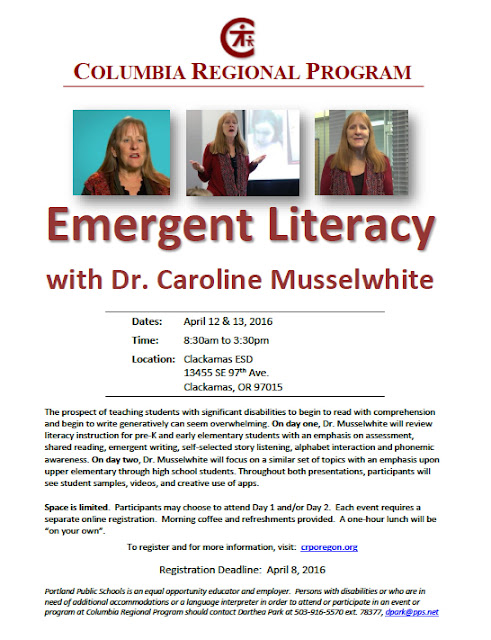The Case for a Good Case
by Deanna K. Wagner, MS/CCC-SLP October 23, 2016 (last updated 12/11/16)
This year we have had reason to discuss pros and cons of various cases based on requests from our funding source, so thought I should share some of what we found out.
First of all, vendors who need to protect their AAC devices carefully research cases, and often end up having them made specially to meet their standards. When we recommend a communication device that already has a case, then replacing or adding parts is so much easier. Just call the vendor! This is the case (pun intended) for the following devices:
Accent devices by Prentke Romich Company
T10, T15, i12, i15 by TobiiDynavox
Some companies have bundled iPad-based devices for Medicare funding. The one like this to come already configured and dedicated (locked) was the ComLink ProSlate by FRS Solutions, and the individual components are not sold separately. These devices are also warrantied by the vendor, just like other AAC devices. They come in 10" iPad and 8" iPad mini sizes.
ComLink ProSlate by FRS Solutions
PRiO by Prentke Romich Company
TouchChat Express by Saltillo Corporation
The PRiO and TouchChat Express come in a case called the ChatWrap, which can be purchased without an iPad. This is not a cheap case, but it includes a bluetooth amplifier, handle and stand as well as 2 switch ports and keyguard options. The keyguards have guides that slip under the boot at the edges of the case and can flip up when not needed. The amplifier has a battery that can be replaced by the family or removed and sent in for technical assistance.
The battery in the iAdapter by AMDi cannot be replaced in the field. This vendor requires the family to send in the case to replace the battery after a couple of years. The keyguards must be purchased from another vendor.
Other cases do not have built-in amplification, and varying degrees of durability. I often refer to the Pinterest by Lauren Enders before making a recommendation. Daedalus sells a couple of these cases (Ballistic, Survivor) with a device plate for wheelchair mounts attached, including options to twist from landscape to portrait mode.
A few other observations... The amplifier and keyguards are attached to the ProSlate (from FRS- see link above) with really strong magnets and are high quality; keyguards are custom fabricated by this vendor in their shop and can have holes that are round or square and of varying thickness.
Keyguards by Beyond Adaptive are much thinner and are held on by straps.
Keyguards by LaseredPics also have options for straps, but also offer others with tabs that slip under the case or use suction cups/tape. Order first based on the app, then options for suction cups or straps based on the case you are using.
Many cases that have stands that fold up or pop open get broken quickly by the students we work with (e.g., GumDrop Hideaway cases). Trident cases have an option to attach a stand that also functions as a handle.
Carefully consider the difference between suction bases (e.g., Tabletop Suction Mount by Ablenet) and vacuum bases (e.g., Naked Flex Mount by Seasucker). Vacuum bases are much stronger.
If you need a water-resistant option, consider the LifeProof Nuud cases. There is also an option for the 12.7" iPad Pro, which means the amplifier is louder than an iPad Air. In the past, this case was designed with a top cover. I haven't ordered the latest version to see whether it still seals well with a screen protector in place. Another nice option for this case is the handle/shoulder strap. The suction option does not have a vacuum seal. To add another layer of protection, you can consider the extra LifeJacket option, which actually floats!


















































